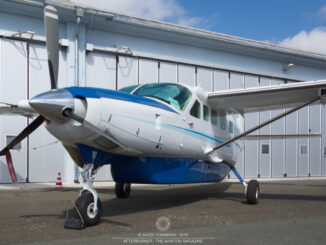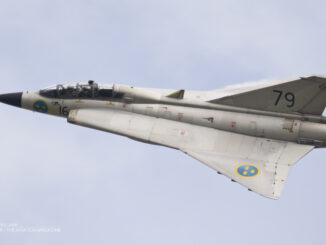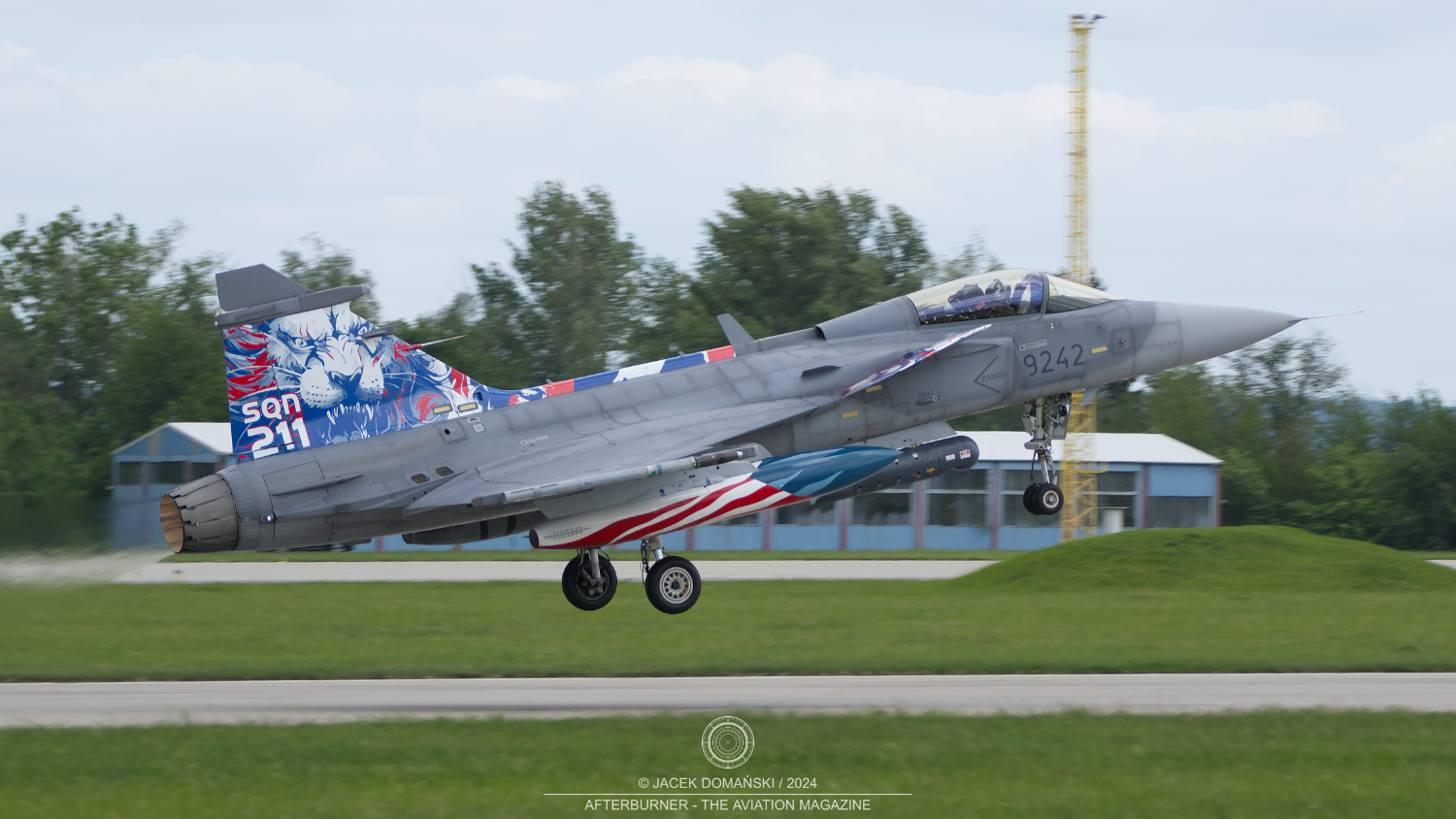 Twenty years ago, on 18th April 2005, the first Swedish-made supersonic jet fighters arrived to 21. základna taktického letectva (the 21st Tactical Air Force Base) in Čáslav, therefore opening the Gripen era in the Czech Air Force.
Twenty years ago, on 18th April 2005, the first Swedish-made supersonic jet fighters arrived to 21. základna taktického letectva (the 21st Tactical Air Force Base) in Čáslav, therefore opening the Gripen era in the Czech Air Force.
The story of the Swedish 4th generation jet fighter began yet in the early 1970s, just at the time when Saab 37 Viggen entered operational service. Concurrently with introduction of the new aircraft, the country´s military authorities for the first time defined requirements for its successor.
The next generation jet had to comply with specific needs of the Swedish Air Force, based on dispersed operations doctrine. They included short take-off and landing capability, easy maintenance, minimal personnel and ground support requirement, as well as short refuel and re-arm time. Following the first conclusions from operational service of the Viggen, the new fighter had to be smaller, although keeping the same – or have even better – combat abilities.
In 1979, following early studies of the future fighter, the Swedish government launched a programme called JAS. This abbreviation – later incorporated into the official name of the aircraft – stands for Jakt (literally: hunting), Attack and Spaning (reconnaissance) and describes the multirole characteristics of the new aeroplane. The goal was to create all-in-one versatile platform, able to perform air-to-air intercept duties, close air support tasks and reconnaissance missions without necessity of developing several versions of the aeroplane, dedicated to each of abovementioned roles.
One year later, a joint venture company named Industrigruppen JAS was created, consisting of leading Swedish industrial and aviation companies – such as Saab-Scania, Volvo Flygmotor or LM Ericsson – as well as the Swedish armed forces. Although branded Saab and developed under the company’s supervision, creation of the new Swedish fighter was a joint effort of several domestic companies.
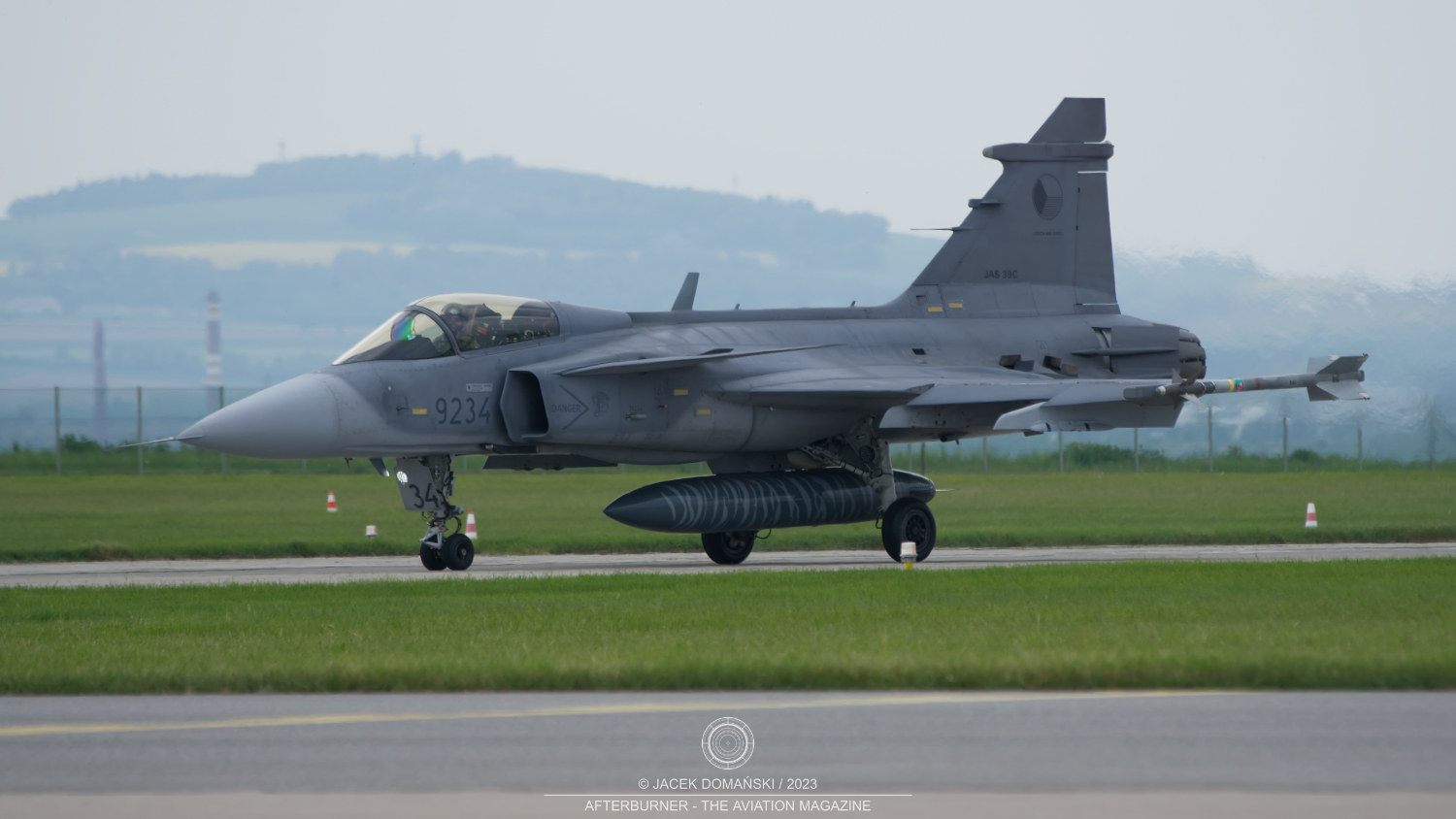
On 26th April 1987, the new JAS 39 fighter was officially disclosed to public, celebrating the 50th anniversary of the Saab company. The aircraft was named Gripen (English: griffin), as a result of public competition. Although its maiden flight was initially scheduled to follow shortly after the roll out, it was delayed for more than a year due to issues with flight control system. Finally, on 9th December 1988, the Gripen took-off into the skies.
Nevertheless, it took almost nine years since the maiden flight until the 4th generation Swedish fighter entered operational service with the Swedish Air Force. The new chapter in Flygvapnet history was officially opened on 1st November 1997, with F 7 Såtenäs fighter unit, also known as the Skaraborg Wing.
Initially, Flygvapnet (the Swedish Air Force) ordered more than two hundred examples of the Gripen fighters, to be delivered in three batches. First production aircraft were ready in 1993 and deliveries continued according to the schedule, until the end of 2008.
The aircraft from the first and second batches were manufactured, and delivered, in A (single-seat) and B (two-seat) variants. However, in the mid-1990s an upgraded version of the fighter was developed, designated C and D, respectively. The modernized Gripen was compatible with the NATO standards and, besides its service in the Swedish Air Force, intended for export customers.
Year and a half after the first JAS 39 fighters entered service with Flygvapnet, the Czech Republic, together with Poland and Hungary, joined NATO. At that time, the Czech Air Force was still operating MiG-21MF fighters that were manufactured in the 1970s.
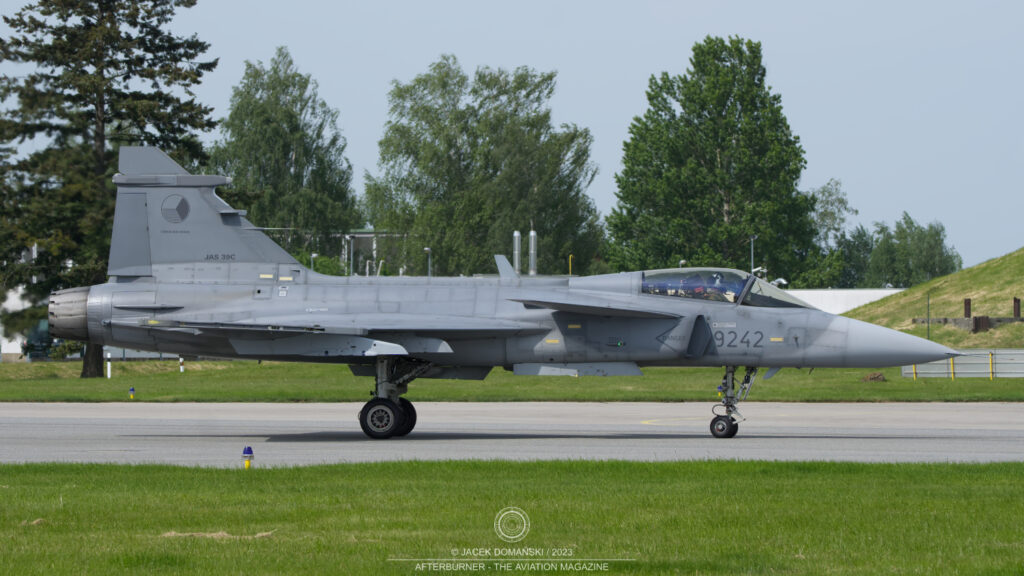
Although the former Czechoslovakia already used more advanced MiG-29 aircraft and, after dissolution of the country, they were split between the newly established states of the Czech Republic and Slovakia, the Czech Air Force had no capabilities to keep them operational as majority of training and repair facilities were based in Slovak part of the republic. Therefore, the Czech authorities decided to sell all the MiG-29s to Poland, in exchange for W-3A Sokół helicopters, so the country´s fighter force relied on the MiG-21 jets.
Nevertheless, it shortly became obvious that the Czech Air Force needed to replace the MiG-21s with much modern aircraft, capable of cooperation within the NATO structures and able to perform air policy duties. After a long negotiation process, the Czech military authorities decided to acquire fourteen JAS 39 Gripen fighters – twelve of the C (single-seat) and two of the D (two-seat) variants of the aircraft – through the long-term financial lease.
The cost of the 10-year lease was approximately 20 billion CZK (850 million USD) and included lease of the aircraft, support and service, with the additional 150 million CZK for the crew training in Sweden. After the 10-year term, Czech Republic could either buy out the Gripens or return them to Sweden.
Although initially the Gripen fighters were received with just their basic configuration, they still meant a milestone for the Czech Air Force. The JAS 39 was much more advanced than the MiG-21MF, had opened several new opportunities and, above all, allowed for the full transition into NATO structures.
Nevertheless, the basic software version – known as MS18.5 or MS18 Block 5 – allowed the Czech aircraft only to use their cannons and AIM-9L Sidewinder short-range missiles. It was just enough to join the NATO Integrated Air and Missile Defence System (NATINAMDS) structure, thus replacing the MiG-21 in its role of air defence fighter.
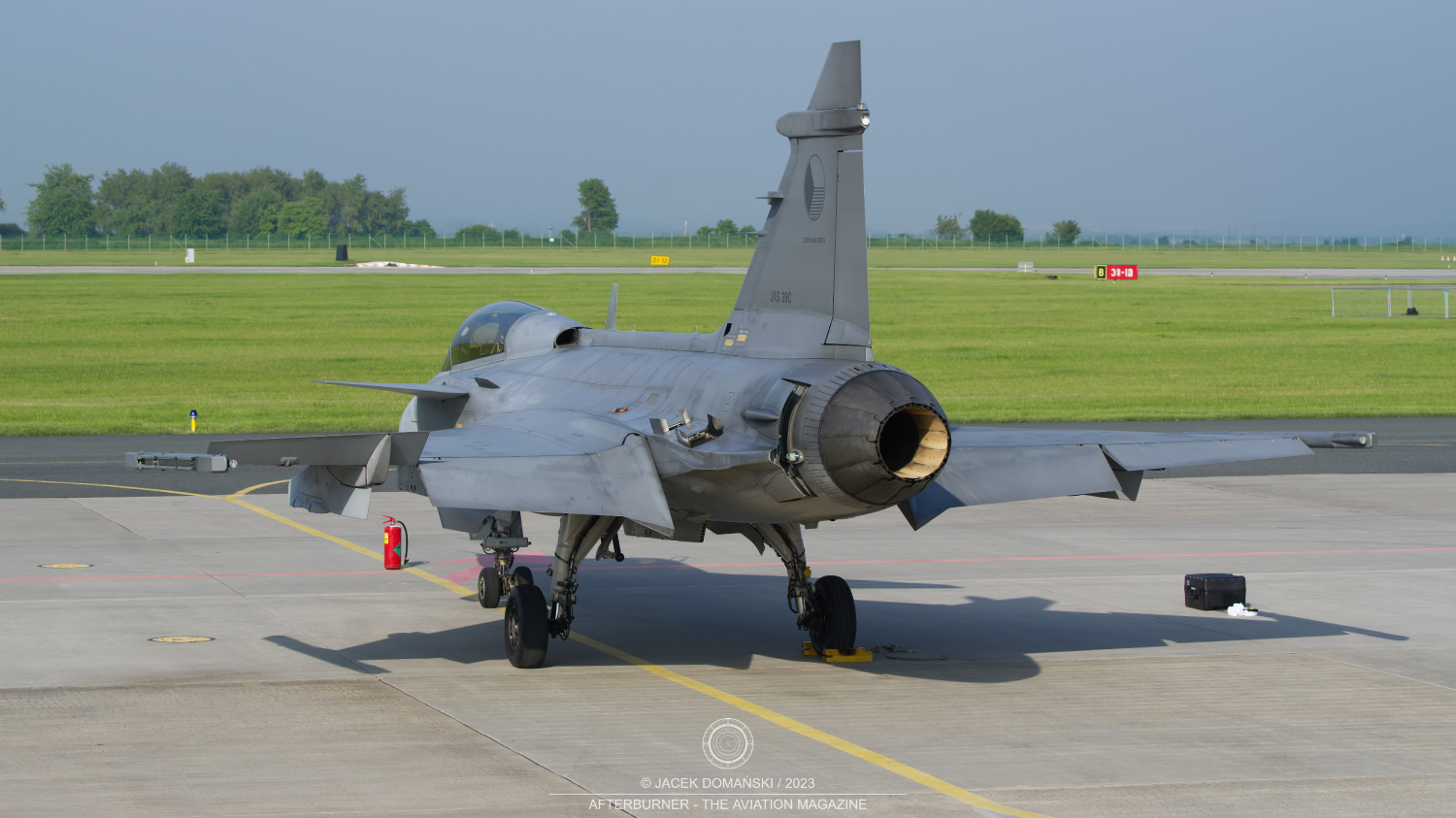
Shortly thereafter, it turned out that the abilities of the new fighter were not exactly meeting the expectations of the Czech Air Force and, in consequence, the Czech JAS 39s underwent several modifications and upgrades – enhancing their operational capabilities and armament. Obviously, costs of all the modernizations were borne by the Czech Republic. For example, just implementation of AIM-120C AMRAAM missiles meant additional cost of 750 million CZK.
In 2007, the Czech Gripen fighters for the first time participated in international live-fly exercise – Operational Integration Exercise 2007 in Belgium, and two years later were deployed to Baltic countries within their first NATO air policing mission.
It was a good start of active international cooperation within structures of the Alliance. Over the following years, the Czech JAS 39s participated in many foreign operations and live-fly trainings, including Baltic and Icelandic Air Policing, NATO Tiger Meets, Operation Unified Protector, Lion Effort and Sky Avenger exercises and many more. In 2010, the 211th Squadron from Čáslav was awarded the Full Membership of the ´NATO Tigers´ association.
In 2010, the fleet of the country´s JAS 39 fighters achieved a total number of 10,000 flying hours. One year later, the first Czech pilot reached the milestone of 1,000 flying hours with Gripen.
In 2015, the initial lease term was extended until 2027, with an additional option for another two years. The value of that extension was 19.6 billion CZK for the aircraft and 1.8 billion CZK for additional training and further upgrades to MS20 and MS20 Block 2 standards. It must be noted that at the time of lease extension, the Czech JAS 39 fleet was at the point of their flight hours limit set in the initial agreement.
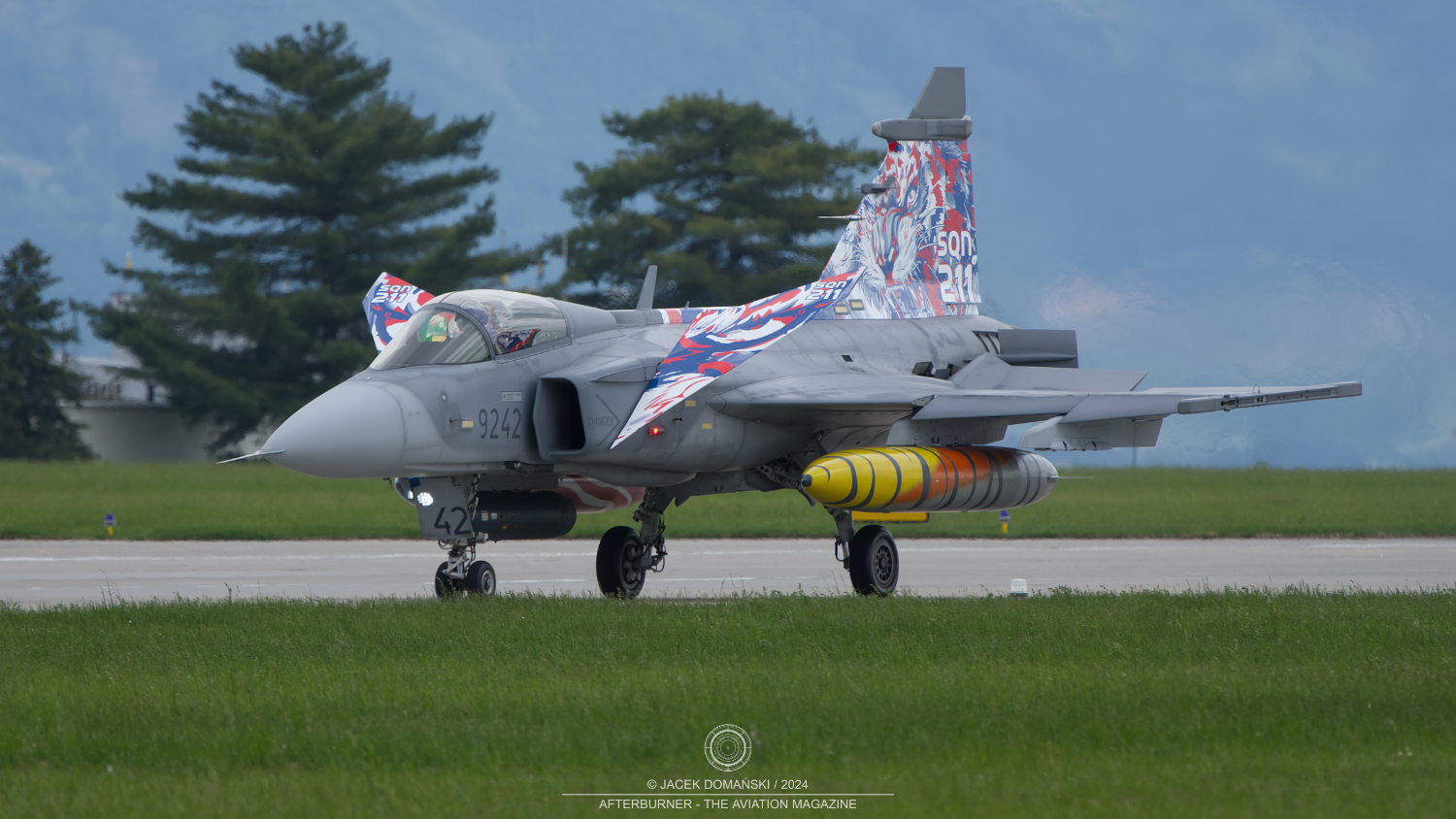
Over the next years, following the extension agreement, the Czech-operated JAS 39 fighters were successively modernised to meet the current requirements of the Czech Air Force.
All fighters were upgraded to the aforementioned MS20 standard which allows the Gripen to engage ground targets with unguided and laser-guided bombs. The aircraft air-to-air capability was improved through new radar modes, the Israeli-made Rafael Litening III electro-optical targeting pod, implementation of Link 16 data link and night-vision googles.
In 2020, symbolically on the Veteran Day, the Czech Gripen fleet achieved another milestone of 30,000 flying hours in total.
Already in 2019, although it seemed to be far too early, the question of future Czech fighter started to be a subject of political debate. It quickly was dragged into public discussion due to some media stories which clearly indicated – usually following some unnamed sources in the USA – that the Czech Republic was interested in purchasing dozens of American fighters.
At that time, the Czech military authorities officially acknowledged that the future of the country´s fighter aviation was discussed internally, although still being confidential and with conclusion to be expected not earlier than in the end of 2021. Moreover, shortly after the country was on the eve of parliamentary election with expected significant change in the political climate, thus any decision related to the future of the fighter aviation was left for the new government.
Irrespective of any speculations, there were just three possible scenarios for the period beyond 2027. The first of them was to buy out the Gripen fighters after expiration of the lease agreement – but to keep them operational for another decade or so, a complicated and expensive upgrade would be needed.
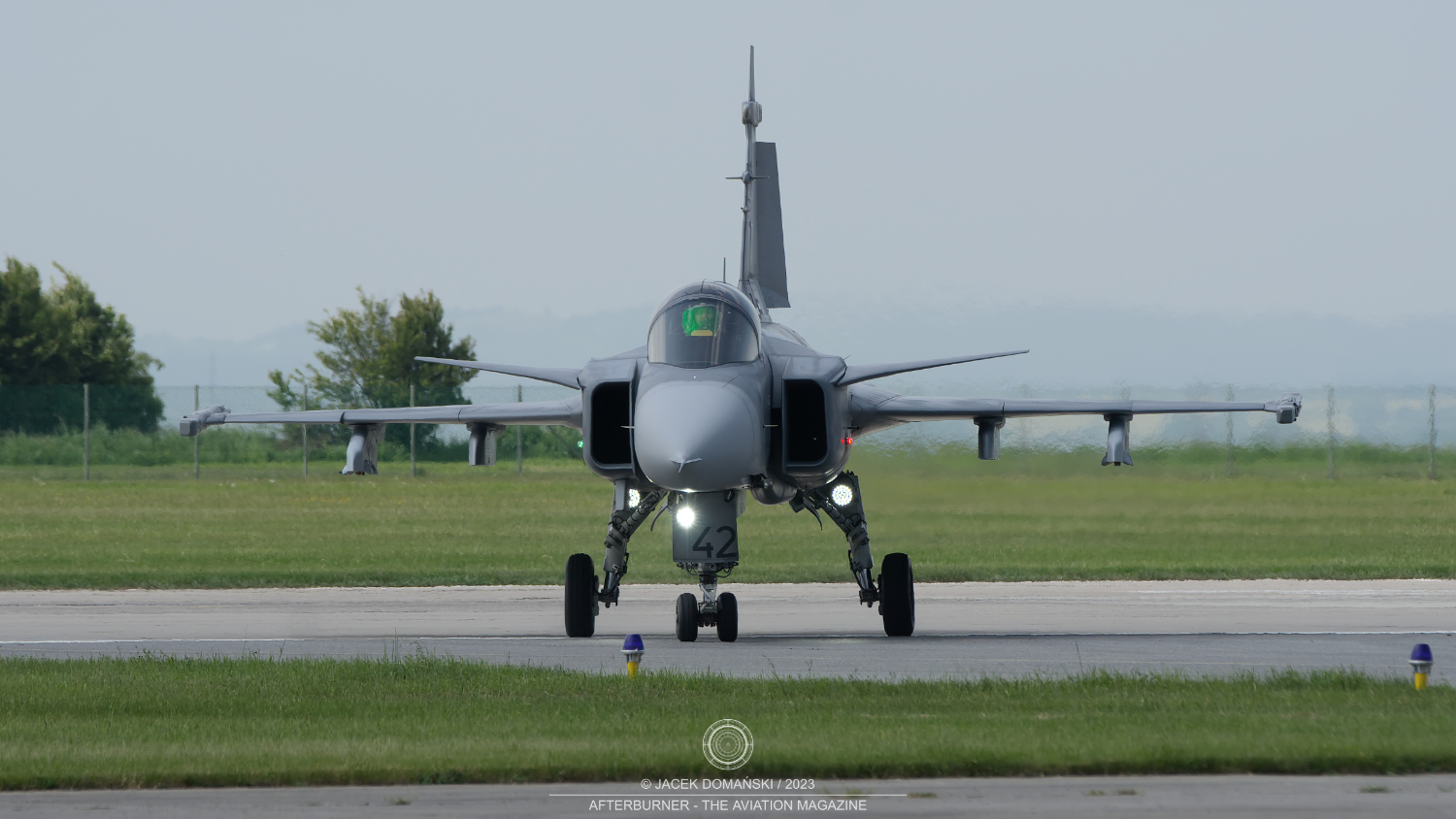
Another solution was to end the existing agreement, return the aircraft to the manufacturer and, at the same time, conclude another lease but for the Gripen E. Back in 2019 and 2020, it seemed the most reasonable option that would mean to maintain existing facilities and use experiences already gained with fifteen years of operating the JAS 39 fighters.
Finally, there was the third scenario that assumed the Gripen aircraft should be retired from the Czech Air Force and replaced by another fighters. In particular, the latter solution launched a wave of speculations that swept through Czech media. Several analyses and research articles were published, all focusing on the best possible fighter for the Czech Air Force. Certainly, some authors let their imagination run wild, mentioning literally all currently manufactured fighters – from F-16, through F-35 Lightning II and F-15, to Rafale and Eurofighter.
On 20th July 2022, the Prime Minister of the Czech Republic officially announced that the country is going to buy – as replacement for current fleet of JAS 39 Gripen aircraft – a certain number of the Lockheed Martin F-35 Lightning II 5th generation fighters.
In addition, the Czech government had stated it openly that the F-35 Lightning II was in fact the only considered option and the MoD was now authorized to start negotiations with the American aviation manufacturer and government. Therefore, the choice of the future fighter aircraft for the Czech Air Force was done without any competition or public bid.
At the end of January 2024, the F-35 purchase agreement was officially signed. The Czech government decided to acquire twenty-four examples of the 5th generation fighters for 150 billion CZK, however the aggregate cost of purchase, implementation and operation of the aircraft was estimated at 322 billion CZK. According to the agreement, the first Lightning II should be delivered in 2031, and the Czech F-35 fleet should be completed until 2035.
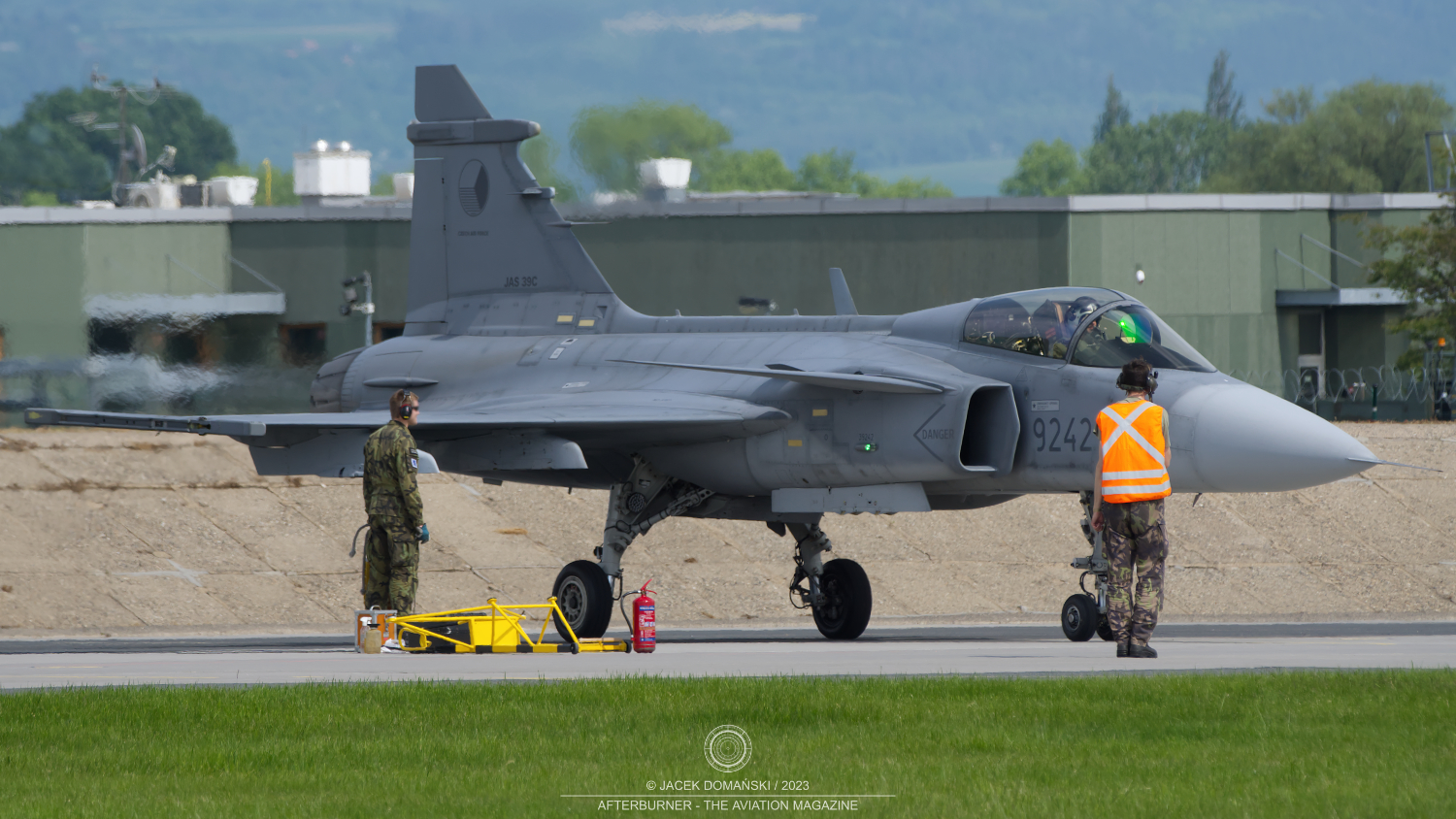
However, an important question related to the shape of the country´s fighter aviation in transition time was still open. The Czech MoD openly stated that the country was expecting to further extend the Gripen lease until the arrival of the last F-35. It was supposed to conclude the new agreement yet in 2024. Moreover, the Czech military authorities awaited the Swedish offers to respect the same price level as before. It meant the annual cost should amount, including the expected 30% increase, approximately 1.7 billion CZK for one aircraft.
Although the exact numbers were not disclosed, the initial Swedish proposal was much beyond that amount, significantly exceeding 2 billion CZK for aircraft per annum, as some of local media reported. In addition, the Czech Republic had to cover cost of two Gripen upgrades, scheduled for the aforementioned transition period. They, according to the Czech MoD, should include modification of the identification and communication systems, as well as day and night refuelling ability. Only the first one, already agreed between the governments, has an estimated value of more than one billion CZK.
In September of 2024, the Czech and Swedish government signed the joint declaration on the lease extension, the new offer was not finally approved by the Czech MoD and negotiations were continued.
Only in April of 2025, the new leasing proposal was received. It included the reduced number of the JAS 39 aircraft – ten single-seat and two two-seat fighters, and, according to the Czech government, the total cost of lease extension is estimated at 16.65 billion CZK, including service and training. Although the new offer was well commented by the Czech MoD, there was no further information if the extension was finally approved. Therefore, for the time being, the future of the country´s JAS 39 fleet remains open.
Moreover, the purchase of the F-35 fighters has taken a firm place among the most discussed topics in the current parliamentary election campaign. The agreement is strongly criticised by opposition, particularly in the light of current developments in the political landscape of the United States.
More information about the Czech JAS 39 Gripen fleet can be also found in our previous articles listed below:


